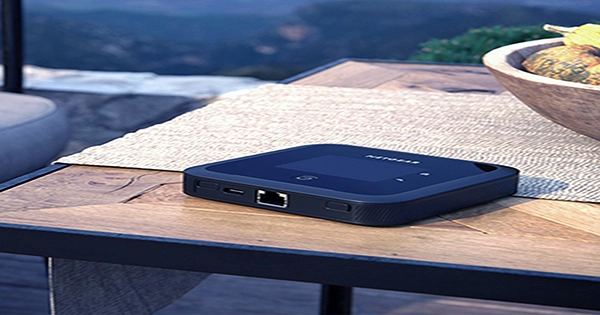The internet has become central to modern life, which is why mobile broadband is so widely used. The likelihood is that if you own a smartphone, you already have a data plan and the ability to share it with other wireless devices via a phone feature called a hotspot. Although it has certain drawbacks, the built-in hotspot feature is a terrific method to access the internet when on the go.
You can purchase a portable router, sometimes referred to as a portable hotspot, like the Netgear Nighthawk 4G LTE, as an alternative to your phone’s hotspot. These relatively tiny gadgets can fit in a pocket and connect to a cellular network similar to a smartphone, but only to broadcast the connection as a Wi-Fi network for nearby devices. You can use your smartphone as a hotspot if you frequently travel for business or pleasure, but there are several solid reasons to purchase a dedicated hotspot device in its place.
Your laptop and tablet may lack built-in SIM support: Several laptops, typically of the ultrabook sort, as well as tablets frequently include built-in cellular connectivity—for a fee, at least. If you’re ready to spend extra money on a cellular model, you’ll be able to take your internet access point with you wherever you go by simply inserting a SIM card (or using an eSIM) into the device. Nevertheless, if your gadget doesn’t have built-in cellular connectivity, you’ll have to use public networks while traveling or rely on the mobile hotspot capability of your phone.
But, there are two issues with those later possibilities that can arise: either the phone’s service plan forbids hotspot access or public networks might not be safe, making it risky to enter into work accounts without a VPN. Although you can usually upgrade your phone plan to enable hotspots, doing so may end up costing you more money in the long run than buying a dedicated data line to use with a mobile hotspot. This is because many carriers only allow hotspot use with expensive unlimited plans.
Numerous wireless service providers now provide SIM cards that are exclusively capable of handling data; some of these cards come with unlimited monthly data, while others require prepayment for a set amount of data that will be made available for up to a year. For instance, you could purchase a SIM card with a data-only plan and prepay for 25 GB of data; you wouldn’t have to pay again until you used up all of the data, which would be the best option if you don’t frequently download files or watch videos. Each suitable portable router can accept a data-only SIM.
You need to avoid draining your phone’s battery: Using the hotspot on your phone will drain its battery faster if you don’t always have access to an outlet while traveling, which could be a big problem if you suddenly need to make or receive a call. In some cases, having a dead battery while in another city or country could also be a safety concern. Specialized portable hotspots feature built-in batteries that enable them to operate independently even when they are not plugged in, so even while having the router’s battery die in the middle of work may be inconvenient, it won’t prevent you from getting in touch with assistance if necessary.
Furthermore, unlike contemporary smartphones, which frequently have sealed back panels, many portable routers are made with straightforward designs that contain user-removable batteries. You can buy a backup battery or two, charge them, and then keep them in your backpack if your portable hotspot has a detachable battery cover. If the hotspot’s battery runs out of power before you return to your hotel room, you can quickly reconnect to the internet by replacing the dead battery with the charged backup battery.
You won’t depend on just one piece of technology: It makes sense to use your smartphone as a mobile internet hotspot until you accidently break or otherwise lose the device. For instance, it is simple to crack a phone’s screen, which may prevent you from activating the mobile hotspot capability. You won’t be able to access the internet independently of other people’s networks without your phone, so you’ll have to use whatever public Wi-Fi connection is available.
In other circumstances, like when you’re staying in a hotel with complimentary high-speed internet, that’s not too bad. Yet, some users can find this circumstance to be extremely difficult. For instance, because to security concerns, some businesses forbid their employees from utilizing coffee shop public networks to access company systems and login portals. Even if your phone isn’t working, you can still access the Wi-Fi network using your laptop, tablet, and/or dedicated portable router. On the other hand, if you misplace the portable router, you’ll just have to use your phone’s hotspot while you wait for a replacement.
Sharing a mobile Wi-Fi connection is simpler: If you frequently travel with a companion, they might access the internet using your mobile device as well. The most practical choice in that situation will be to have a dedicated portable Wi-Fi router, as the other person will be able to continue utilizing the connection even if you get a call and need to take a short break. If you and your travel companion will be spending some time apart while at your location, this is also the most practical choice.
In connection with that, if you frequently get calls, it’s not a good idea to use your phone’s built-in hotspot capability because the data connection can break down when you’re speaking with someone. That might be a challenge if you’re utilizing the hotspot for work and you need to engage in calls using a cellular network rather than a VoIP service or video chat. You can continue to use Wi-Fi on your other devices while making calls by using a portable Wi-Fi router.















